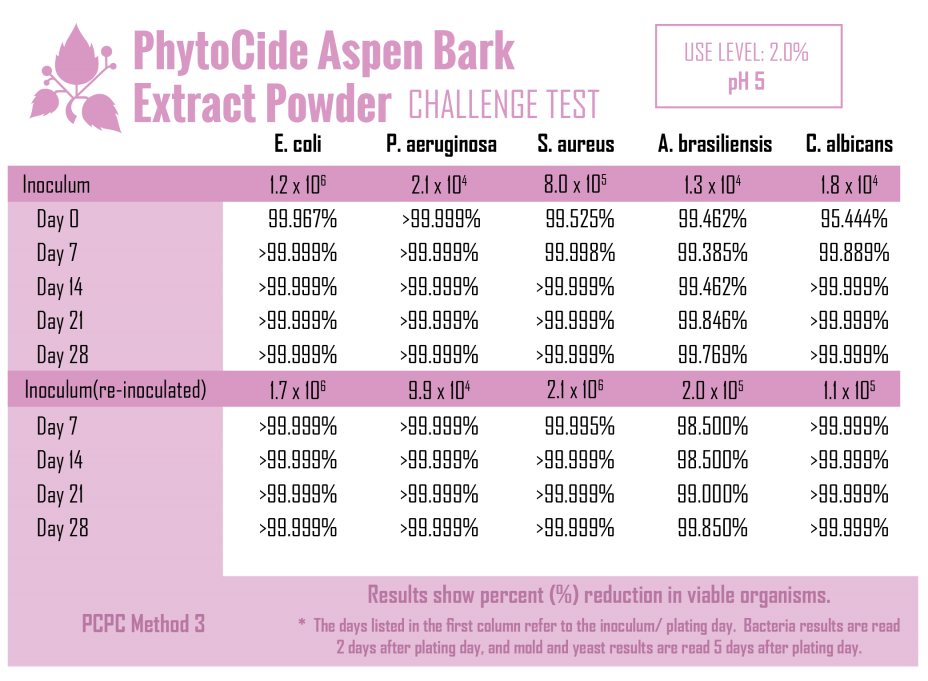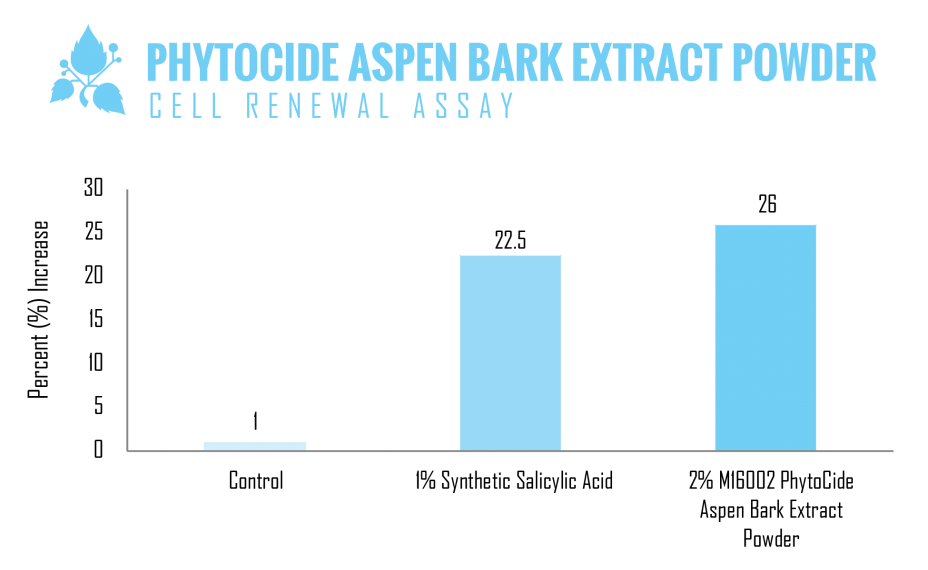PhytoCide Aspen Bark Extract Powder
Background
Populus tremuloides also referred to as Quaking, Trembling or American Aspen originates in the northern and western areas of North America. The trees typically grow in vast colonies that originate from a single seedling. The trees’ primary means of reproduction is via the sprouting root suckers (new stems) from the roots. Although the trees live on average between 40 and 150 years, the root system can survive for a considerably longer period of time. In fact an Aspen colony in Utah referred to as ‘Pando’ is said to be 80,000 years old, which would make this colony the oldest living colony. The Aspen’s root system is capable of spreading approximately one meter per year and is therefore capable of expanding to cover an area of several hectares. One reason for the tree’s success is due to the ability of the colony to withstand fires. Although the trees may burn, the roots that are capable of sprouting new trees are safely below the fire’s reach.
Science
The bark of the Aspen tree is rich in salicylates that may function as the plant’s natural defense mechanism against invading parasites. The salicylates in Aspen bark may also be used for medicinal purposes. Medicinal barks have been used as analgesics and to reduce fevers for centuries. Today, doses of 1 to 3 g of bark with concentrations ranging between 60 to 240 mg of salicylates is recommended as an analgesic for low back pain.
 Benefits
Benefits
These salicylates may be isolated from Aspen Bark and applied to cosmetic and personal care products as a natural alternative to traditional chemical preservative systems. Our manufacturing method allows us to consistently isolate a salicylate content between 54.0 – 60.0%, which makes PhytoCide Aspen Bark Extract Powder an ideal antimicrobial. As an additional benefit PhytoCide Aspen Bark Extract Powder may also impart a smooth feel to the skin. A Double Challenge Test was completed using 2% PhytoCide Aspen Bark Extract Powder in a generic cream base formulation. Samples were inoculated with E. coli, P. aeruginosa, S. aureus, A. brasilien- sis and C. albicans. During the first 28 day incubation period, samples were periodically collected and tested for the presence of these microorganisms. Following this initial 28 days of incubation, the cream samples were then re-inoculated with the microbial cultures and sampled over an additional 28 day period. This shows the positive preservation results for PhytoCide Aspen Bark Extract Powder.
Use Recommendations
PhytoCide Aspen Bark Extract Powder is water soluble and may therefore be added to aqueous systems, as well as the aqueous phase of emulsions. When using PhytoCide Aspen Bark Extract Powder it is recommended to maintain the formulation pH between 3 and 9. We also suggest incorporating the product at temperatures of 60°C or below.



